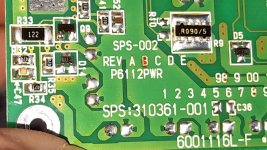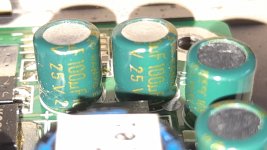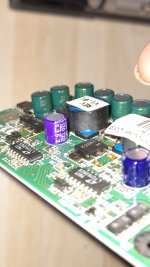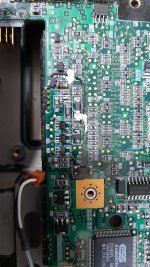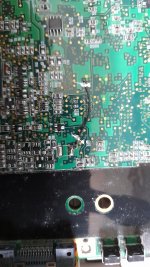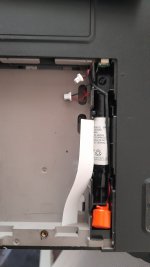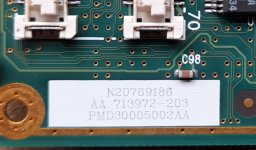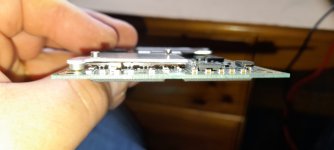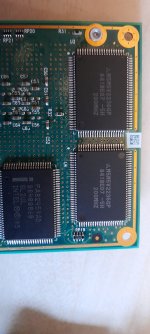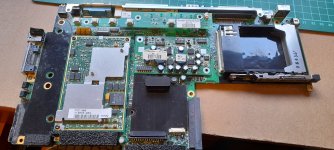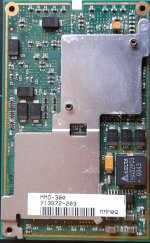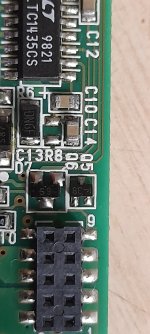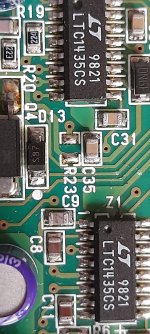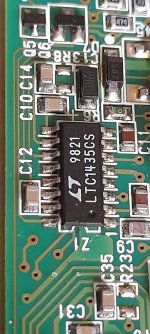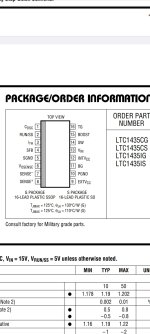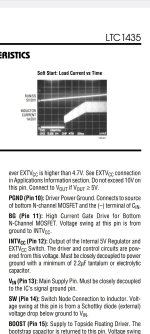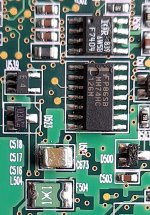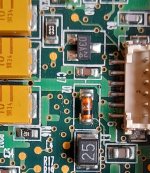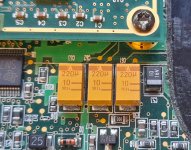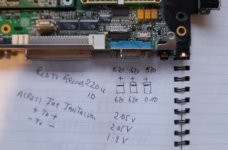Wappynutter
Experienced Member
Hi all..
Quick question to the VCF hive mind.
Compaq Armada 3500 pentium 300 64mb ram built in. Purchased 10 or more years ago off a popular auction site.
Purchased as spares or repairs, no psu, untested. Arrived smashed screen and with no way to test it I put it in the stash.
Jump forward to 2023 and with a bench psu and some bodge wires as this is an uncommon sickle tip charger. I supplied the required volts and amps, tested power was getting to the motherboard and yes, we have power but....
Doesn't turn on, seems to supply 2volts to the battery charge rail. No lights, smells warm so took a sniff and felt the heat coming off 3 of the capacitors on the the powerboard.
Most were warm but 3 were to hot to touch.
I'm guessing these are my startup problem.
There are signs of some professional repairs on the back of the board so I'm fairly sure that isn't an issue. I just want to check for life in this old laptop before I commit to purchasing a replacement screen and a psu.
Repair documentation is next to nothing, even YouTube info is limited.
I can order some low profile 100uF 25v caps and replace I'm just wondering if others have had a similar scenario or have any information on the Armada 3500. Thanks in advance, let try and save another vintage laptop.
(pictures of the powerboard info, caps that are warm, top 3 in 3rd picture are the hot ones, powerboard on the motherboard under the keyboard, last 2 pictures show repairs.)
Quick question to the VCF hive mind.
Compaq Armada 3500 pentium 300 64mb ram built in. Purchased 10 or more years ago off a popular auction site.
Purchased as spares or repairs, no psu, untested. Arrived smashed screen and with no way to test it I put it in the stash.
Jump forward to 2023 and with a bench psu and some bodge wires as this is an uncommon sickle tip charger. I supplied the required volts and amps, tested power was getting to the motherboard and yes, we have power but....
Doesn't turn on, seems to supply 2volts to the battery charge rail. No lights, smells warm so took a sniff and felt the heat coming off 3 of the capacitors on the the powerboard.
Most were warm but 3 were to hot to touch.
I'm guessing these are my startup problem.
There are signs of some professional repairs on the back of the board so I'm fairly sure that isn't an issue. I just want to check for life in this old laptop before I commit to purchasing a replacement screen and a psu.
Repair documentation is next to nothing, even YouTube info is limited.
I can order some low profile 100uF 25v caps and replace I'm just wondering if others have had a similar scenario or have any information on the Armada 3500. Thanks in advance, let try and save another vintage laptop.
(pictures of the powerboard info, caps that are warm, top 3 in 3rd picture are the hot ones, powerboard on the motherboard under the keyboard, last 2 pictures show repairs.)

